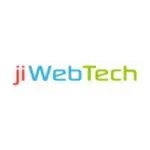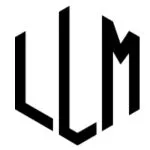
Top Adtech Companies
Explore the top AdTech companies of 2025 transforming digital advertising through AI, programmatic platforms, and immersive experiences. Leaders like The Trade Desk, Criteo, and RTB House are pioneering data-driven solutions, while innovators such as Omneky and Aryel are redefining creative automation and augmented reality ads. Established giants like Google and Microsoft’s Xandr continue to evolve, integrating privacy-focused technologies and advanced analytics. These companies are at the forefront of reshaping how brands engage audiences across channels, ensuring more personalized, efficient, and impactful advertising strategies in an increasingly competitive digital landscape.
List of the Best Ad Tech Companies | Top Adtech Companies in the World

-
Employees: 101 to 250
-
Min. Project amount: $5,000+
-
Country: South Jordan, USA

Bimitry
-
Employees: 11 to 50
-
Min. Project amount: $1,000+
-
Country: Oklahoma City, USA

RIZZNART
-
Employees: 11 to 50
-
Min. Project amount: $1,000+
-
Country: Sandy,USA

jiWeb Technologies
-
Employees: 101 to 250
-
Min. Project amount: Undisclosed
-
Country: Mohali, India

Alpha eBook
-
Employees: 0 to 10
-
Min. Project amount: Undisclosed
-
Country: Rajkot, India

FlashIT NYC
-
Employees: 50 to 100
-
Min. Project amount: Undisclosed
-
Country: New York, USA

LLM Software
-
Employees: 11 to 50
-
Min. Project amount: Undisclosed
-
Country: Dallas, TX

Quickway Infosystems
-
Employees: 11 to 50
-
Min. Project amount: $1,000+
-
Country: Noida, India

CISIN
-
Employees: 1,000 to 9,999
-
Min. Project amount: $5,000+
-
Country: Delaware, USA

Crescaler
-
Employees: 11 to 50
-
Min. Project amount: Undisclosed
-
Country: Ambala, India
** Buyer's Guide **
- 1. What Are AdTech Companies and What Services Do They Provide?
- 2. What types of services do AdTech companies provide to advertisers and publishers?
- 3. What are the key benefits for businesses that partner with AdTech companies?
- 4. What crucial factors should businesses consider when choosing an AdTech company?
1.What Are AdTech Companies and What Services Do They Provide?
AdTech (Advertising Technology) companies develop platforms and tools that facilitate the planning, execution, and analysis of digital advertising campaigns. Their services typically include:
Programmatic Advertising: Automated buying and selling of ad inventory in real-time.
Demand-Side Platforms (DSPs): Allow advertisers to purchase digital ad space efficiently.
Supply-Side Platforms (SSPs): Enable publishers to manage and sell their ad inventory.
Data Management Platforms (DMPs): Aggregate and analyze audience data to enhance targeting.
Creative Optimization: Use AI to personalize and optimize ad creatives for better engagement.
AdTech Companies: Powering the Digital Advertising Ecosystem
AdTech (Advertising Technology) companies are at the core of modern digital advertising, developing sophisticated platforms and tools that orchestrate the entire lifecycle of digital advertising campaigns. From the initial strategic planning and targeted audience identification to the automated execution and granular analysis of results, these companies provide the technological infrastructure that enables efficient and effective ad delivery across the vast digital landscape. Their services are designed to maximize return on investment for advertisers and optimize revenue for publishers.
Their typical services include:
Programmatic Advertising: This is the automated, real-time buying and selling of digital ad inventory. Instead of manual negotiations, programmatic advertising uses software and algorithms to execute ad transactions based on specific targeting criteria and bidding strategies. This automation allows for incredible speed and scale, enabling advertisers to place bids on billions of ad impressions per day and ensuring ads are delivered to the right audience at the right moment. It encompasses various methods like Real-Time Bidding (RTB), Private Marketplaces (PMPs), and Programmatic Guaranteed deals.
Demand-Side Platforms (DSPs): DSPs are software platforms that serve as the advertiser’s interface to the programmatic ecosystem. They allow advertisers to manage their advertising campaigns across multiple ad exchanges and publisher sites from a single interface. Advertisers can set their budgets, targeting parameters (demographics, interests, behaviors, location, device), and bidding strategies. The DSP then automatically bids on ad impressions that match the advertiser’s criteria in real-time, ensuring efficient purchasing of digital ad space and maximizing reach to their target audience.
Supply-Side Platforms (SSPs): SSPs are the publisher’s equivalent of DSPs. They are automated platforms that enable publishers to manage and sell their digital ad inventory (e.g., website banner space, video pre-rolls, mobile app placements) to advertisers programmatically. SSPs help publishers maximize their ad revenue by connecting them to multiple DSPs, ad networks, and ad exchanges. They optimize yield by running auctions and ensuring that publishers get the highest possible price for their impressions.
Data Management Platforms (DMPs): DMPs are central data hubs that collect, organize, and analyze vast amounts of audience data from various sources (e.g., website analytics, CRM systems, third-party data providers). They segment this data into anonymous audience profiles based on demographics, interests, and behaviors. This aggregated and structured data is then pushed to DSPs, allowing advertisers to enhance their targeting capabilities and deliver more relevant and personalized ads to specific user segments without compromising individual privacy.
Creative Optimization: This service goes beyond just designing an ad. It involves using advanced technologies, often powered by Artificial Intelligence (AI) and Machine Learning (ML), to personalize and optimize ad creatives for better engagement. This can include dynamic creative optimization (DCO) that automatically tailors ad content (e.g., headlines, images, calls-to-action) in real-time based on user data, context, or performance. The goal is to ensure the most effective version of an ad is shown to each individual, thereby increasing click-through rates and conversion potential.
Analytics and Attribution: These services are fundamental for understanding campaign effectiveness and demonstrating ROI. AdTech companies provide sophisticated analytics dashboards and reporting tools that track key performance indicators (KPIs) such as impressions, clicks, conversions, cost per click (CPC), and return on ad spend (ROAS). Attribution models help advertisers understand which touchpoints or channels (e.g., a display ad, a social media post, a search ad) contributed to a conversion, allowing them to allocate their budgets more effectively across their marketing mix.
Analytics and Attribution: Measure campaign performance and attribute conversions accurately.
AdTech, short for advertising technology, encompasses a suite of tools and platforms that facilitate the planning, execution, and analysis of digital advertising campaigns. AdTech companies develop and provide these technologies to help advertisers and publishers optimize their advertising efforts, ensuring that ads reach the right audience at the right time and place.
Key Services Offered by AdTech Companies
Demand-Side Platforms (DSPs):
DSPs are platforms that allow advertisers to purchase digital ad inventory across multiple publishers efficiently. They enable real-time bidding (RTB) on ad impressions, allowing advertisers to target specific audiences based on demographics, behavior, and other criteria. Examples include The Trade Desk and Google’s Display & Video 360.Supply-Side Platforms (SSPs):
SSPs assist publishers in managing and selling their ad inventory. They connect publishers with multiple ad exchanges and DSPs, maximizing the value of their ad spaces through real-time auctions. Notable SSPs include Xandr and OpenX.Ad Exchanges:
These are digital marketplaces where advertisers and publishers buy and sell ad inventory. Ad exchanges facilitate RTB, ensuring that ad spaces are sold to the highest bidder in real-time. Prominent ad exchanges include Google AdX and Index Exchange.Data Management Platforms (DMPs):
DMPs collect, organize, and analyze vast amounts of audience data from various sources. This data helps advertisers create detailed audience segments, enhancing targeting precision and campaign effectiveness.Ad Servers:
Ad servers store and deliver advertisements to digital platforms. They manage ad placements, track performance metrics like impressions and clicks, and ensure that the right ads are shown to the appropriate audiences.Creative Management Platforms (CMPs):
CMPs streamline the creation, testing, and optimization of ad creatives. They allow for dynamic creative optimization, ensuring that ads are tailored to individual user preferences and behaviors.Customer Data Platforms (CDPs):
CDPs aggregate customer data from various touchpoints, providing a unified view of each customer. This comprehensive data aids in crafting personalized marketing strategies and improving customer engagement.Analytics and Attribution Tools:
These tools measure the performance of advertising campaigns, attributing conversions and sales to specific ads or channels. They provide insights that help in optimizing future campaigns for better ROI.
Benefits of Utilizing AdTech Services
Enhanced Targeting: AdTech enables precise audience targeting, ensuring that ads reach users most likely to engage or convert.
Efficiency and Automation: Programmatic advertising automates the ad buying process, saving time and resources.
Real-Time Optimization: Campaigns can be adjusted in real-time based on performance data, maximizing effectiveness.
Comprehensive Insights: Advanced analytics provide deep insights into campaign performance, audience behavior, and ROI.
Scalability: AdTech platforms can handle campaigns of varying sizes, making them suitable for both small businesses and large enterprises.
In summary, AdTech companies offer a range of services and tools that empower advertisers and publishers to execute more effective, efficient, and data-driven advertising campaigns in the digital landscape.
2.What types of services do AdTech companies provide to advertisers and publishers?
AdTech companies offer a diverse range of services. For advertisers, this includes Demand-Side Platforms (DSPs) for programmatic ad buying, data management platforms (DMPs) and customer data platforms (CDPs) for audience targeting and segmentation, and ad servers for managing and tracking campaigns. For publishers, they provide Supply-Side Platforms (SSPs) to sell ad inventory efficiently, and often integrate with ad exchanges to facilitate real-time bidding (RTB). Many AdTech companies also offer analytics, fraud detection, and optimization tools to maximize campaign performance and revenue.
AdTech (Advertising Technology) companies operate at the intersection of advertising and technology, providing sophisticated tools and platforms that streamline, automate, and optimize the buying and selling of digital advertising. Their services cater to two primary stakeholders: advertisers (buyers) looking to display ads, and publishers (sellers) looking to monetize their digital content.
For advertisers, AdTech companies offer a comprehensive ecosystem designed to make campaigns more efficient and effective:
- Demand-Side Platforms (DSPs): These are automated software platforms that allow advertisers to buy ad impressions across a variety of publisher sites and apps through real-time bidding (RTB) auctions. DSPs enable precise audience targeting, budget management, and campaign optimization.
- Data Management Platforms (DMPs) and Customer Data Platforms (CDPs): These platforms help advertisers collect, organize, and activate vast amounts of audience data from various sources (first-party, second-party, third-party). DMPs are primarily used for anonymous audience segmentation and targeting, while CDPs build persistent, unified customer profiles, enabling highly personalized ad experiences.
- Ad Servers: These are crucial for managing, delivering, and tracking digital ad campaigns. Ad servers help advertisers store their ad creatives, decide which ad to show to a specific user, and provide detailed reporting on impressions, clicks, and conversions.
- Creative Management Platforms (CMPs): These tools assist in the efficient creation, adaptation, and delivery of ad creatives across different formats and platforms, ensuring brand consistency and maximizing creative impact.
For publishers, AdTech companies provide solutions focused on monetizing their digital inventory:
- Supply-Side Platforms (SSPs): These platforms allow publishers to automate the selling of their ad impressions programmatically. SSPs connect publishers to multiple ad exchanges, DSPs, and ad networks, ensuring their inventory is exposed to a wide range of buyers and sold at the best possible price through RTB.
- Ad Exchanges: These are digital marketplaces where advertisers (via DSPs) and publishers (via SSPs) buy and sell ad inventory through real-time auctions. They act as the central hub for programmatic transactions.
- Yield Optimization Tools: Publishers use these tools to maximize their ad revenue by intelligently managing ad placements, pricing, and demand sources to achieve the highest possible yield from their inventory.
Furthermore, many AdTech companies offer cross-cutting services that benefit both sides of the ecosystem:
- Analytics and Reporting: Providing in-depth data and insights into campaign performance, audience behavior, and revenue generation, enabling data-driven decision-making.
- Fraud Detection and Prevention: Implementing technologies to identify and block fraudulent impressions and clicks, ensuring that ad spend is genuine and effective.
- Measurement and Attribution: Helping businesses understand the true impact of their ad campaigns across different channels and touchpoints, attributing conversions accurately.
- Audience Measurement: Providing tools to understand who is seeing ads and how they are reacting.
In essence, AdTech companies build the technological backbone that facilitates modern digital advertising, connecting advertisers and publishers, automating complex processes, and driving efficiency and effectiveness in the digital ad ecosystem.
3.What are the key benefits for businesses that partner with AdTech companies?
Partnering with AdTech companies offers numerous benefits. Businesses can achieve highly targeted advertising, ensuring their messages reach the most relevant potential customers, which boosts engagement and conversion rates. It leads to optimized ad spend by eliminating wasted impressions and maximizing ROI through real-time bidding and performance monitoring. AdTech also provides operational efficiencies by automating complex ad buying processes, freeing up marketing teams. Furthermore, it offers deeper insights into campaign performance through advanced analytics and reporting, enabling data-driven decision-making and continuous improvement.
Partnering with AdTech companies has become almost essential for businesses looking to navigate the complexities and opportunities of the digital advertising landscape effectively. These partnerships offer a multitude of advantages that can significantly impact a company’s marketing performance, efficiency, and overall bottom line.
Highly Targeted Advertising: This is arguably the most transformative benefit. AdTech platforms enable businesses to move far beyond broad, mass-market advertising. By leveraging vast pools of data (demographics, behavioral patterns, purchase history, interests, location, and even real-time context), AdTech companies allow advertisers to create highly segmented and specific audience profiles. This means ads are shown only to the most relevant potential customers – those who are genuinely likely to be interested in a product or service. For a business in Kurnool, this could mean targeting ads specifically to users within certain pin codes, or even to people who have visited a competitor’s physical location. This precision dramatically increases the chances of engagement, clicks, and ultimately, conversions.
Optimized Ad Spend and Maximized ROI: AdTech fundamentally changes how ad budgets are allocated. Through programmatic buying and real-time bidding (RTB), advertisers only pay for impressions that meet their precise targeting criteria and are valued in milliseconds. This minimizes wasted ad spend on irrelevant audiences. Furthermore, AdTech platforms continuously monitor campaign performance, allowing for real-time optimization. If an ad creative isn’t performing well, or a specific audience segment isn’t converting, adjustments can be made instantly, reallocating budget to higher-performing elements. This dynamic optimization ensures that every rupee spent works harder, leading to a significantly higher return on investment (ROI).
Operational Efficiencies and Automation: The traditional process of buying and selling ad space was labor-intensive, involving manual negotiations, insertion orders, and lengthy back-and-forth communication. AdTech automates these processes to an unprecedented degree. DSPs and SSPs handle the entire transaction seamlessly, freeing up marketing teams from tedious manual tasks. This automation not only saves significant time and human resources but also allows marketing professionals to focus on higher-level strategic planning, creative development, and in-depth analysis, rather than the mechanics of ad placement. This speed and scale are crucial for businesses needing to launch and adjust campaigns rapidly.
Deeper Insights and Data-Driven Decision Making: AdTech platforms are powerful data engines. They provide robust analytics tools and comprehensive reporting that offer unparalleled insights into every aspect of a campaign. Businesses can track metrics like impressions, clicks, conversions, viewability, engagement rates, and even customer journeys across different touchpoints. This granular data allows for a profound understanding of what’s working, what isn’t, and why. These insights empower businesses to make informed, data-driven decisions about their advertising strategies, refine their targeting, optimize their creatives, and continuously improve their campaign performance over time, moving from guesswork to scientific marketing.
In summary, partnering with AdTech companies empowers businesses with the tools to advertise smarter, not just harder. They offer the technology to reach the right people, at the right time, with the right message, all while optimizing spend and providing actionable insights for continuous growth.
4.What crucial factors should businesses consider when choosing an AdTech company?
When selecting an AdTech company, businesses should consider several critical factors. Look for their proven expertise in your specific advertising needs (e.g., mobile, video, CTV, display). Assess their transparency in data usage, ad placement, and pricing models, especially concerning ad fraud prevention. Evaluate their targeting capabilities and the depth of their audience data. Crucially, examine their reporting and analytics features to ensure you’ll receive actionable insights. Finally, consider their customer support, responsiveness, and their ability to integrate seamlessly with your existing marketing and sales technology stack.
Selecting the right AdTech partner is a strategic decision that can significantly impact a business’s advertising performance and overall digital strategy. It’s not just about features, but about finding a partner that aligns with your specific needs, values, and long-term goals.
Proven Expertise in Your Specific Advertising Needs:
- Specialization: Does the AdTech company specialize in the types of advertising you need most? For instance, if you primarily run video ads, look for strong capabilities in video pre-roll, in-stream, and CTV (Connected TV) advertising. If mobile app installs are key, seek expertise in mobile-specific inventory and attribution.
- Industry Knowledge: While not always mandatory, an AdTech partner with experience in your industry (e.g., e-commerce, real estate, automotive) might understand your audience and conversion funnels more intuitively.
- Scale and Reach: Can they access the inventory and audience scale you require, both globally and locally (e.g., specific to Kurnool or Andhra Pradesh if that’s your target)?
Transparency in Data Usage, Ad Placement, and Pricing Models:
- Data Sourcing & Usage: How do they acquire and use audience data? Ensure they comply with privacy regulations (like GDPR or local Indian data privacy laws) and are transparent about their data sources.
- Ad Placement Visibility: Can they provide clear visibility into where your ads are actually being displayed (e.g., specific websites, apps)? This is crucial for brand safety and avoiding placements on irrelevant or undesirable content.
- Pricing Structure: Understand their pricing model thoroughly. Is it a percentage of media spend, a fixed fee, a hybrid model, or based on specific features? Are there any hidden fees or minimum spend requirements? Transparency here builds trust and prevents budget surprises.
Targeting Capabilities and Data Depth:
- Granularity: How granular are their targeting options? Can you target by demographics, interests, online behaviors, purchase intent, geographic location (down to city or pin code level), device type, and even custom audience segments?
- Audience Data Quality: Inquire about the quality and recency of their audience data. Do they use first-party, second-party, and reliable third-party data? Strong data integration (e.g., DMPs/CDPs) is vital here.
- Retargeting and Lookalike Audiences: Do they offer robust capabilities for retargeting users who have previously interacted with your brand, and for creating lookalike audiences based on your best customers?
Reporting, Analytics, and Attribution Features:
- Actionable Insights: Do their reports provide more than just raw numbers? Look for actionable insights that help you understand campaign performance, identify optimization opportunities, and justify your ad spend.
- Customization: Can reports be customized to your specific KPIs and business goals?
- Attribution Models: How do they attribute conversions? Do they offer various attribution models (e.g., first-click, last-click, linear, time decay) to give you a more holistic view of campaign impact across different touchpoints?
- Real-time Monitoring: Can you monitor campaign performance in real-time or near real-time, allowing for quick adjustments?
Customer Support and Responsiveness:
- Availability: What kind of support do they offer (e.g., dedicated account manager, live chat, email, phone)? How responsive are they to queries and issues, especially critical ones?
- Proactive Guidance: A good AdTech partner will not just react to problems but also proactively offer insights, suggest improvements, and guide you on new features or industry trends.
- Onboarding and Training: Do they provide comprehensive onboarding and training to ensure your team can effectively use their platform?
Integration Capabilities and Scalability:
- Ecosystem Compatibility: How well does their platform integrate with your existing marketing technology stack (e.g., CRM, analytics tools, CMS)? Seamless integration saves time and ensures data consistency.
- API Access: Do they offer robust APIs for custom integrations if needed?
- Scalability: Can their platform scale with your business’s growth? As your advertising needs expand, will their technology and support be able to keep up with increased volume and complexity?
By rigorously evaluating these factors, businesses can choose an AdTech company that not only provides powerful tools but also acts as a strategic partner, helping them achieve their advertising objectives and maximize their digital marketing investment.



